Essential Equipment for Sourdough Bread Baking
This post may contain affiliate links. Please read my disclosure policy.
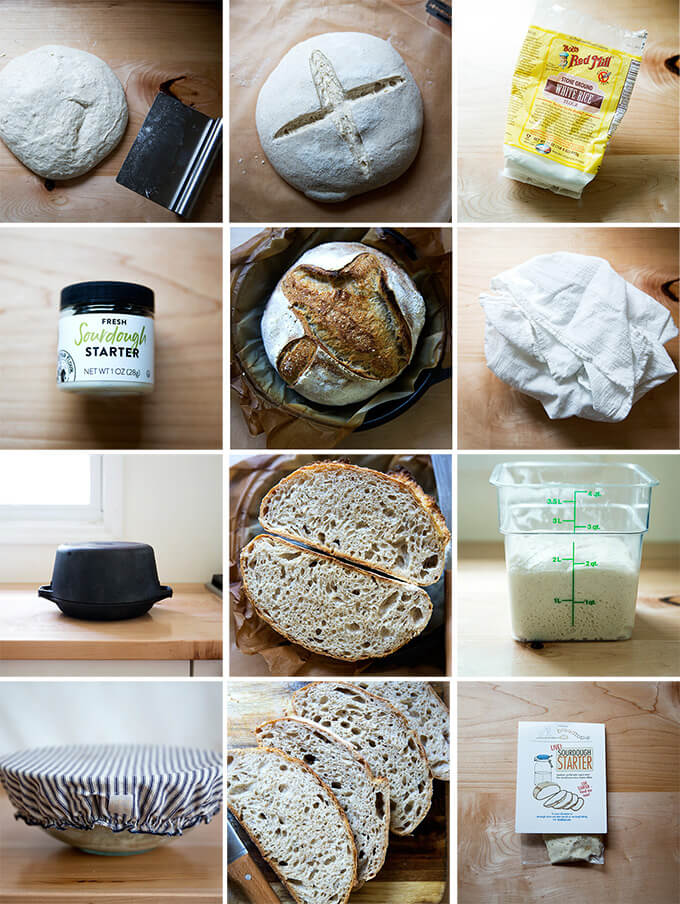
You don’t need any fancy equipment to make sourdough bread.
If you have a sourdough starter and some sort of baking vessel on hand, you can start baking. This sourdough focaccia recipe, for instance, requires nothing more than a sourdough starter and a 9×13-inch baking vessel or something similar.
If you find yourself, however, really getting into sourdough baking, and if, in particular, you’re after a crusty boule, you may want to pick up a few more pieces of gear.
Here are the tools and ingredients I find essential for sourdough bread baking.
10 Essential Tools for Sourdough Bread Baking
1. Sourdough Starter
As you know, a sourdough starter is what distinguishes a loaf of sourdough bread from a loaf of yeast-leavened bread. For various reasons, which I outline here, I suggest buying (or procuring otherwise) a starter as opposed to making one from scratch. In short: it’s for ease. If you know a sourdough baker, he or she most likely will share. If you don’t, here are a few online sources:
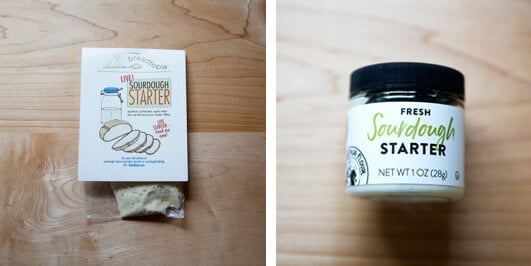
2. Digital Scale
I say this all the time, but if you are serious about bread baking or baking in general, you must measure your ingredients with a digital scale. It’s the only way to truly accurately measure ingredients and to, in turn, make smart/informed changes based on your results. In fact, I will go so far as to say: do not attempt making sourdough bread without a digital scale on hand.
This scale costs under $10, is very accurate, holds up to 11 pounds, and is beautifully designed as well.

3. Clear, Straight-Sided Vessel
This 4-qt Cambro (**this one is BPA-free!**) has become, after my scale, my most valued tool for sourdough baking. Why? It lets me see exactly when the dough has risen sufficiently (roughly 50% increase in volume) and is therefore ready to be shaped. When dough rises in a bowl, judging how much it has grown is tricky. There’s no question with a straight-sided vessel.
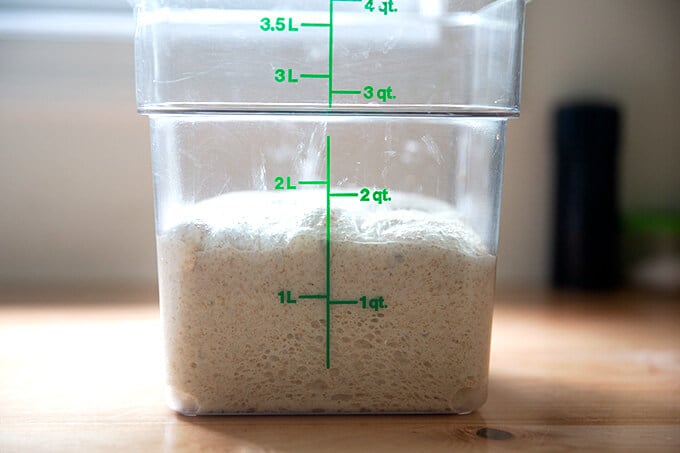
4. Non-Stick Flour-Sack Towels
These flour-sack towels are amazing (UPDATE: ORDER WITH CAUTION AS THE QUALITY HAS APPARENTLY CHANGED. I can highly recommend these flour sack towels, however. When you use flour sack towels, dough, even very high-hydration dough, releases without any sticking.
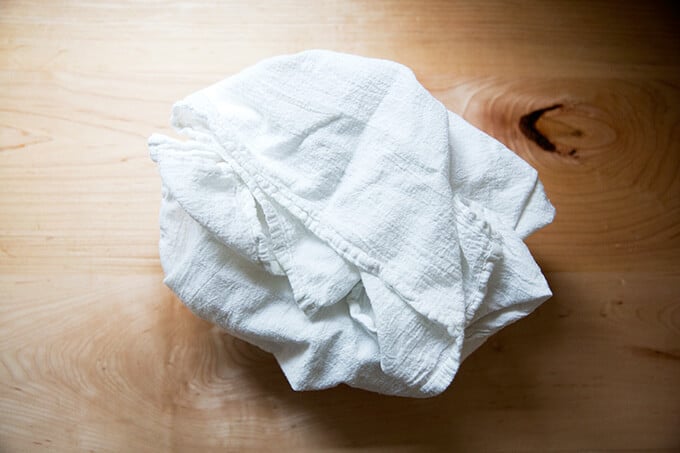
5. Rice flour
I sprinkle a little bit of rice flour on the flour sack towel before placing the shaped dough on it. It’s purely for looks — I like the contrast of the dusting of white flour against the auburn hue of the bread, and rice flour doesn’t burn the way wheat flour does. Before I discovered the flour sack towels, I used the rice flour to help prevent sticking with my tea towels, so you may find it helpful for that purpose as well.
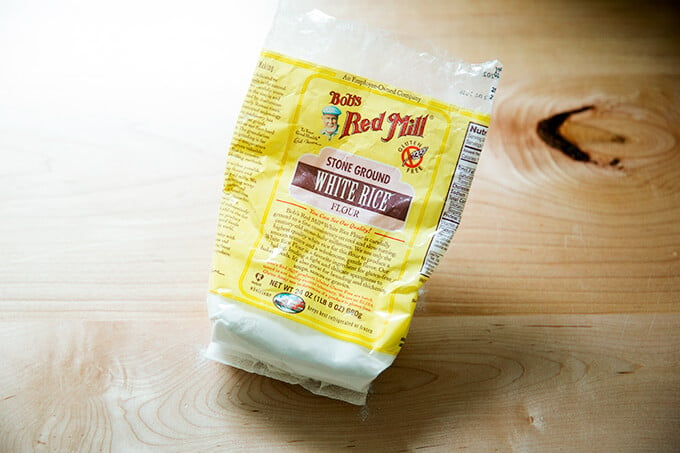
6. Bench scraper for shaping.
I no longer flour a work surface for shaping. I rely on my bench scraper and minimal handling of the dough. See video here or below.
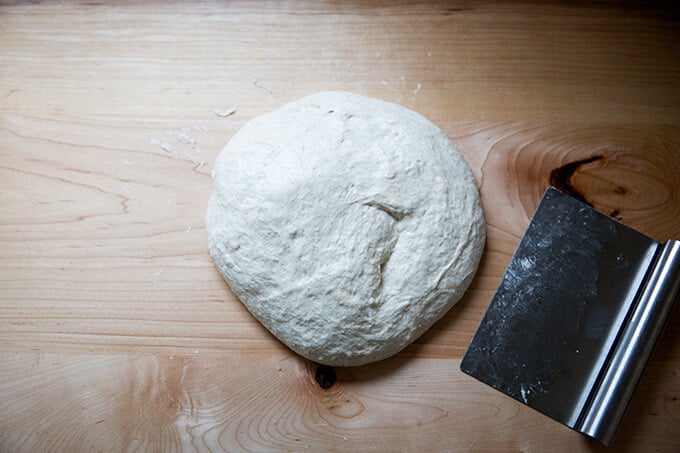
7. Parchment Paper
For ease in transferring dough from counter to Dutch oven, I rely on parchment paper.
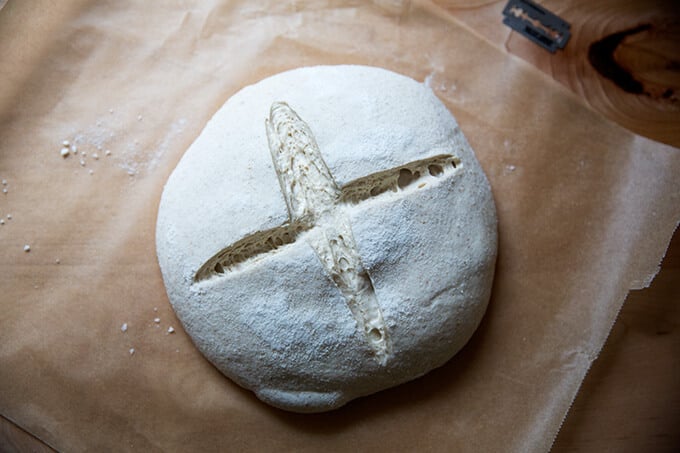
8. Razor Blade
For slashing dough before it bakes, you’ll need a razor blade. I don’t do any fancy scoring, but it doesn’t matter. A simple X looks dramatic in the end.
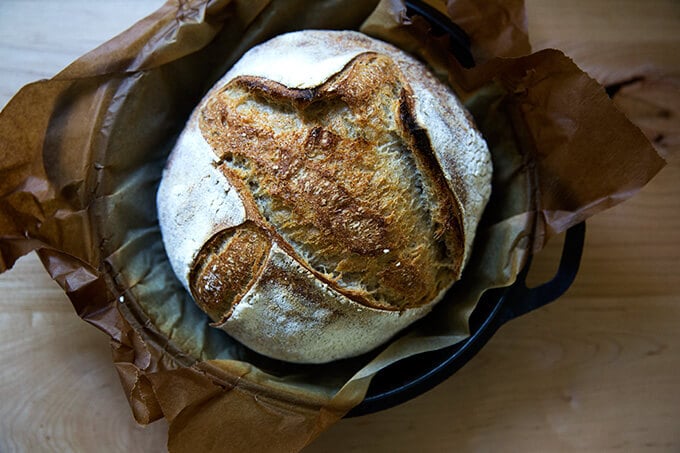
9. Double Dutch Oven
If you are after that crusty boule, you’ll need a Dutch oven. This one essentially lives in my oven these days. If you have a Dutch oven, you can definitely use it, but keep in mind: you might not like what the hot temperature of the oven for an extended period of time does to it. My Le Creuset Dutch oven, for instance, turned very dark on both the exterior and interior and required a deep cleaning afterwards. I use this Lodge Double Dutch oven exclusively for sourdough baking. It’s durable and reasonably priced, and it lives in my oven.
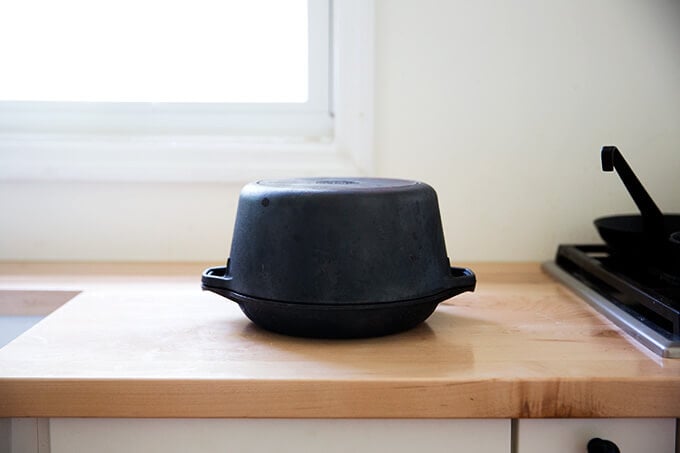
10. Oven Mitts
And if you’re going to be handling a screaming hot cast iron vessel, you’re going to need a good pair of oven mitts. These have been great.
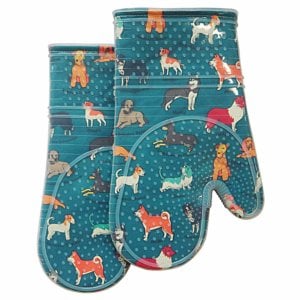
A Few More Things
- Sharp Bread Knife
Crusty loaves require a good, sharp knife. This one is attractive and reasonably priced. This one is a little more expensive, but also nicely designed and sharp.
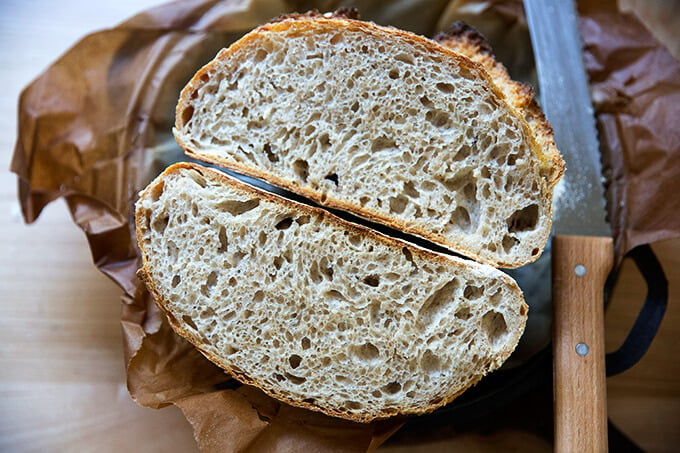
2. A large bowl for mixing the dough. Something like this is nice because it’s clear, which makes it easy to read the scale.
3. A spatula: Love my GIR Spatula.
4. **Treat Yourself**: Dot and Army Cloth Bowl Cover. I love my cloth bowl covers for keeping loaves of rising dough cozy.
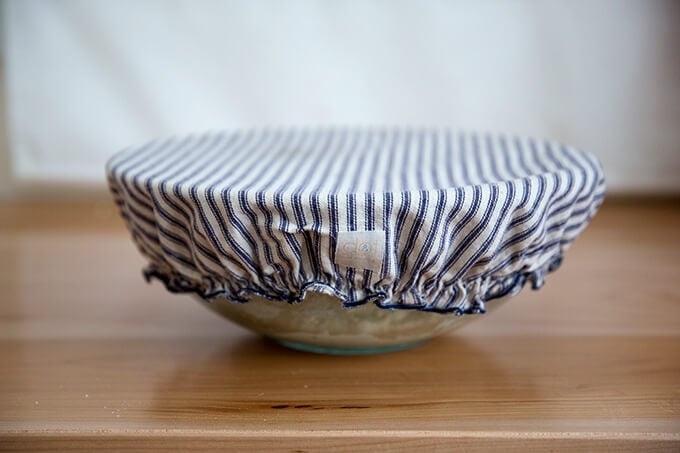
This post may contain affiliate links. Please read my disclosure policy.

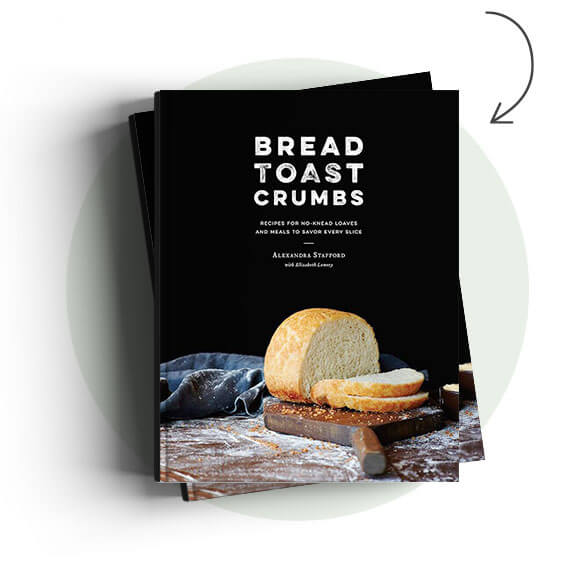

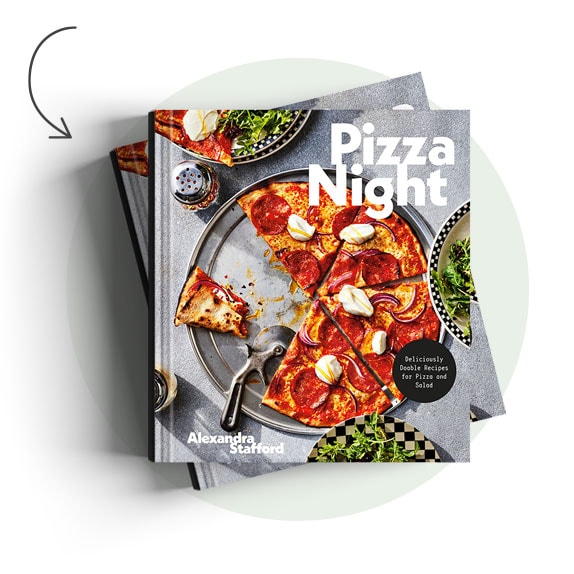
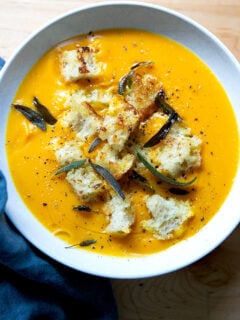
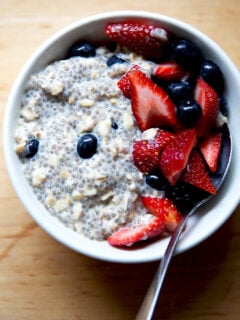
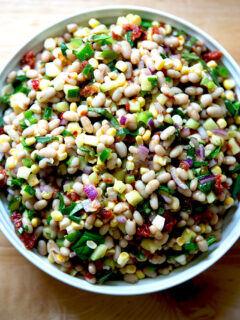
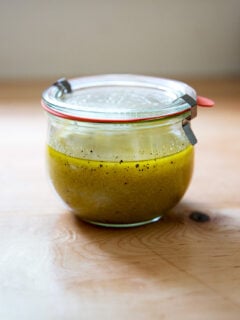
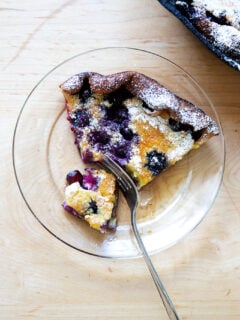
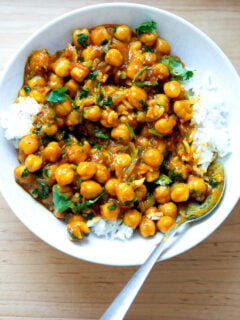

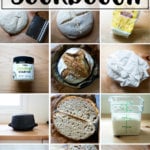
66 Comments on “Essential Equipment for Sourdough Bread Baking”
My husband and I did a month long road trip to Alaska when we were first married. I went into a bakery and asked if they would let me take a bit of their sourdough starter home with me (I thought it would be the best Alaskan souvenir!) And they did! It is 15 years old. I cradled it in a paper coffee cup on ice the whole 44 hour drive home. Now I have brought it around the world with me in all the places we’ve lived and it’s still going strong. Can’t wait to give it to my great grandchildren 🙂
So sweet indeed, and truly the best Alaskan souvenir 🙂 🙂 🙂 Thanks so much for sharing this Kelly! You have lucky grandchildren.
So happy you are doing a sourdough series! Just wondered what your thoughts are on using a banneton or brotform basket for proofing?
Oh definitely! Go for it. I was mostly trying to keep the list to a minimum, and 2-qt mixing bowls work well for proofing, but I love bannetons and brotforms. Use ’em!
Hi! Do you exclusive use the 5 qt cast iron? I’m going back and forth between getting the 4 and 5 qt for bread baking. Also, I have loved every recipe I have made from your site and found them incredibly approachable and delicious!
So nice to hear this, Rebecca … thank you 🙏☺️
I do use the 5 qt exclusively for bread baking. I don’t think I would recommend going smaller. When I make a larger boule with 500 g flour (as opposed to 400 g), the loaf nearly fills the pot … there’s a little bit of extra space, but I wouldn’t be able to bake a loaf much larger than that.
Hope that helps!
Hello I also have a 5qt dutch oven. I like to bake smaller loaves of bread. What is an ideal weight/size for a boule so that it is big enough to have a nice oven spring that rises upwards, rather than just rising outward to fill the vessel? Thank you!
I can’t tell you an ideal weight size, but I can tell you that this boule and this one both cook up beautifully in a 5-qt Dutch oven.
What width bread scraper would you recommend?
Hi Katie,
Mine is 6 inches wide, and I think that is sufficient. I have seen larger ones on youtube videos, but those are generally used with much larger loaves. For the loaves I am baking, which never call for more than 500 g flour, a 6-inch bench scraper is great. I also use it to shape smaller balls, like when I’m dividing and rounding up pizza dough portions, and I think if my bench scraper were larger, this would be trickier.
I’m looking for a consistent bread flour- do you have any recommendations? I got some bulk all purpose four however it has rock hard chunks in it that I attempt to sort out by hand.
King Arthur Flour has been my favorite flour for 20 years. I love their bread flour and all-purpose flours in particular. It’s a little hard to come by these days, but if you can get your hands on either, it’s no fail.
What can be used instead of a Dutch oven?
Do you have an oven-safe pot? You can use that with a sheet pan placed on top.
Hi I enjoy the comments. Is there much to mess up a starter?
I get beautiful starter in 10 to 12 days start with 1/2 cup Rye 1/2 cup whole Wheat 1/2 cup home distilled water. Yet my Boule turns out like Swiss cheese heavy moist, yuk!!! What am I doing wrong? Makes me cry!
🐝
Oh Billie! Don’t cry!
A few thoughts: first of all, it’s great that you have no trouble getting a starter going. Once you get it to the point that it is doubling in volume within 8 hours and passes a float test, I would start changing your feeding schedule so that you are feeding it equal parts by weight flour and water. This will give you a 100% hydration starter, which is what many recipes call for.
Second: Are you using a scale to measure the flour/water/salt/starter etc? It makes all the difference.
Third: This is the starter recipe I suggest you try: Favorite Sourdough Bread
Just found your recipe a friend emailed it,just new to the sour dough bread making so far loving it quite different then regular breads,just wondering in your recipe that calls for bread flour can I just use white I bleached flour instead,,enjoying reading your emails ,also if baking once a week is it good to keep starter in fridge as sometimes I may go longer as have just started to bake now lol
Thanks again so easy to follow you
Hi Val! Welcome. Yes, unbleached all purpose flour is fine. (Bleached flour is not great.) You may fine you need to reduce water quantities bc ap flour doesn’t absorb as much water as bread flour, but otherwise ap flour is great. I use it all the time. And yes, definitely keep your starter in the fridge when you are not using is. I feed mine once every couple of weeks when I am not in the habit of baking.
I have a Schlemmer Topf (somewhat rectangular) and a ceramic baking dish with a lid (this one is round) Can I use either of these to bake the bread?
Hi Mary! As long as the vessels are oven safe, they will work! I have never tried a Schlemmertopf, but I imagine that would be great. I know many people that use ceramic baking dishes for sourdough.
I’m very glad I found your posts. I’ve looked at many webpages about sour dough as I explore this new hobby. Yep, its a hobby because I don’t eat much bread but am fascinated with making it. Anyway your presentation is the perfect combination of clearly knowing what you are talking about, and teaching, without being a “know it all.” I love science and truly believe bread making is founded in science. thank you so much!
So nice to hear this, LuAnne! Thanks so much for writing. Let me know if you have any questions along the way!
Was helpful your video.i have the tools &a few more after 3 years. Very challenging exercise. This is the first time I have had to mix by hand. Interesting, but very physical.
Hi,
Firstly – thank you!! Your recipe is the first one I’ve found that actually works for me. It’s taken a long time, but finally i can make the bread I’ve always wanted to.
Only thing is, i’m burning the bottom of the loaf. I’ve turned the heat down to 500 to heat the dutch oven, but it’s still coming out burnt. Can I go any lower on temp, or is that going to kill the ovenspring?
Hi Tom! Great to hear this. You can definitely turn the oven down. I would try preheating at 450ºF. Bake covered for 30 minutes. When you uncover at the 30 minute mark, remove the loaf and check the bottom, if it’s looking too dark, remove it from the pot and bake it directly on the oven racks; if it looks fine, keep it in the pot for the duration.
What type of flour are you using for dusting? Rice or wheat flour?
I had been using wheat flour, but just bought some rice flour, so i’ll try that next time.
Thank you so much for replying!
Great!
I made this Focaccia bread yesterday. We live in Florida, and it’s summer, so it’s very hot and humid. My dough was very sticky–not at all like regular bread dough–but I had measured all ingredients very carefully, so I proceeded with the recipe. It only raised for 3 hours the first time (not the 4-18 hours in the recipe). The second raising was about 5 hours. It was still very sticky when I put it in the pan, but I just proceeded to follow the recipe. It turned out awesome! I added a little fresh rosemary to mine before baking. It was just delicious! I can’t wait to make it again!
Oh yay! Kay, so nice to hear this. Thanks so much for writing, and way to stick with it despite the stickiness. It is definitely a wet, sticky dough!
Thanks. I am new to sour dough and was struggling until I discovered this!
Wonderful to hear this, Linda!
Hello Alexandra. I was reading about the different vessels to bake bread in. We used a cast-iron pot with a lid and inlaid parchment paper and it turned out very well. We thought to make two loaves and used a Roemer Topf (German for Roman pot) which is an elongated tara cotta (a bit fragile but never fails) clay pot which the Roman soldiers carried with them for cooking 2000 years ago. The bread is always really good and everyone appreciates it and is happy for another loaf. They can be found in thrift stores (our two), the internet, and of course certain stores. We really like the R.T. pots and are quite pleased with the bread. I spent a good deal of my life in Central Europe, and I must say that my wife’s bread does not lag behind in goodness. Thank you for your “public service,” and I look forward to using your recipe. Regards, Alexander
So nice to hear all of this! My mother is a huge fan of the RT, and I have to confess, I haven’t experimented with it enough, but I will soon. Thank you for the encouragement.
Where can I buy a straight sided vessel?
Hi Michele! I like this one.
I used your simple sourdough recipe and made a loaf yesterday. It was perfect. The step by step recipe and video was extremely helpful. I am wondering if you have a recipe for the Indian naan using the sourdough starter. Thanks.
So great to hear this, Sudha! I don’t have a sourdough recipe for naan, but I feel like this recipe could be easily adapted to using naan: Simple Yeasted Naan.
After shaping my 4 loaves that weigh about 950 gm each, I put them in stainless “dog bowls” that I got from the dollar Store. I coat the bowls with PAM, then with rice flour and then do the final 2 hour rise in those. I put them directly in a 475 F oven covered with a cloche or an inverted doggy bowl. Simple and easy. My start is from Boudine Bakery in SF
Great tips, Cap! Thanks for writing.
I love this recipe, and have had much success. I do have one little problem with the bottom of my bread getting too “hard” after baking in the cast iron skillet. What can I do ?
Hi Susan! If you jump to the FAQ’s on this post, I address this issue and offer a few ideas on how to prevent it: https://alexandracooks.com/2020/08/28/why-is-my-sourdough-so-sticky-plus-fixes-to-4-common-sourdough-mistakes-and-faqs
I absolutely love watching your recipes. Thank you so much for making my sourdough a better experience!
So nice to hear this, Trish 🙂 🙂 🙂 Thanks so much for writing.
I have tried to bake Sourdough bread but the rise in volume was missing!
Hi! Are you confident in the strength of your starter?
Hi,
Thanks for sharing your sourdough experiences.
How much dough will your Cambro 4 QT container hold? Enough space for 2 x 500 g flour breads? (i.e. 2 x 1 kg final bread weight)?
Is the bread in your picture a single loaf?
Thanks!
Hi Nic! Yes, it will hold 2 x 500 g loaves. The photo shows 1 500-gram loaf. Hope that helps!
Thank you, that helps!
When you said GIR spatula, I thought you meant GIR from invader Zim. I got excited for a moment there. Sadly, it wasn’t him.
🤣🤣🤣🤣🤣 I’m sorry to disappoint!
Are you able to use the 5qt Lodge Dutch oven with dough shaped in a 10″ oval bread banneton or is it too small to fit on the lid?
It’s a little small unfortunately. The Challenger is so pricey, but the shape is really nice and versatile. There is likely something out there similarly shaped for less $$. I’ll keep my eyes peeled.
Yup, the Challenger is a bit out of my budget. Maybe I can substitute my pizza stone for the lid when I’m baking an oval shaped loaf. That should add another inch or so since the Lodge lid is slanted \___/.
That is a great idea! Go for it.
Love all your content! Thank you for sharing! Do you have a preferred vessel for flour storage? Thanks!
I actually just leave the flour in the bags they came in! But I go through it so quickly, so that’s partly why. If I come across a nice flour storage vessel, I will let you know 🙂 Thank you for your kind words.
Hi thanks for the thorough post! I’ve bought the flour sack towels once last year through your link and they were awesome! I decided to buy more last week and *gasp!* they are not the same product.
Same link. Same product description. Same seller, even.
I thought it might’ve been a fluke so I ordered another one. Same thing. They are not the same as the ones I received last year.
Have you had this problem before with these flour sack towels?
Oh no! That’s terrible. I’m so sorry… I’m going to make a note in the post. Thanks for bringing this to my attention.
Ordered your book. Just beginning with sourdough.
Thank you, Donna! My book, unfortunately, is not sourdough… but you can use the toast and crumbs chapters for the many sourdough loaves you bake. I also have a free sourdough email course if you’re looking for more guidance.
Ok I started to make your bread but it was very dry and stiff. Didn’t rise after over night and still stiff. I’m assuming to much flour. I did not use a scale. Should I just start over?
Have you ever made sourdough before? As in, are you confident in the strength of your starter?
Hi Ali! Do you have an opinion on bannetons made out of rattan vs wood pulp? I’m having a hard time deciding which I would want, as I haven’t used either before! Thank you so much for such an in-depth step-by-step guide to sourdough, it’s giving me confidence to try this!
Hi Nicole! And thank you 🙂
I don’t have an opinion actually… I think I’ve only used the rattan ones — I just googled the difference, and I’m fairly certain I have not used wood pulp. I always line my bannetons with flour sack towels, so the material doesn’t make much of a difference to me in terms of its nonstick properties. Hope that helps!
Thank you so much for your recipe and guidance for making sourdough! I’ve tried other recipes and never had very satisfactory results and was about to give up when I found your website and thought I’d give the basic recipe a try- it turned out so well for me! A couple of questions:
Can I just double the amounts (ie 1000g flour) and make two loaves or is it better to make two separate batches of dough?
Also- I have a banneton (9”) but it is just too small to hold the dough. I couldn’t find a banneton in your list of equipment and wondered if you could tell me which one you use/recommend? Thanks again!
So nice to read this, Rachel! Yes, you can double it, especially since you are using a scale to measure the ingredients.
My banneton is actually 8.5 inches, but I wonder if it’s maybe wider and deeper? The one I bought from Amazon is no longer available. I just googled and found this one which looks promising if you’ve found the 9″ one to be too small.